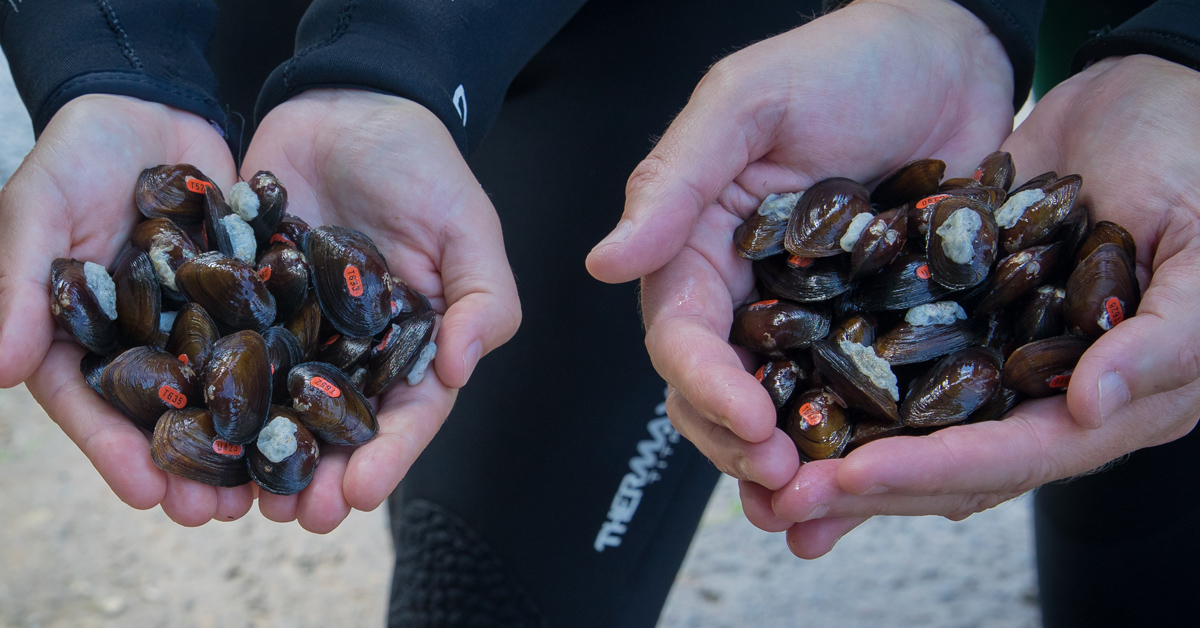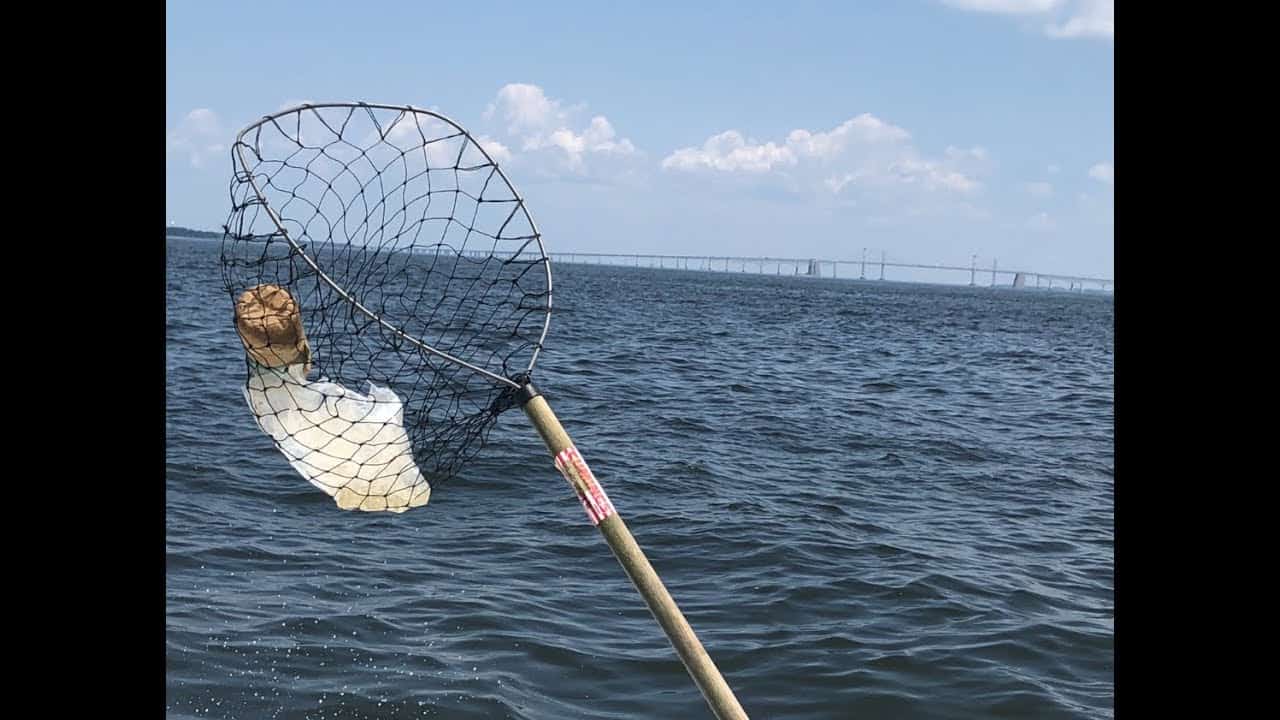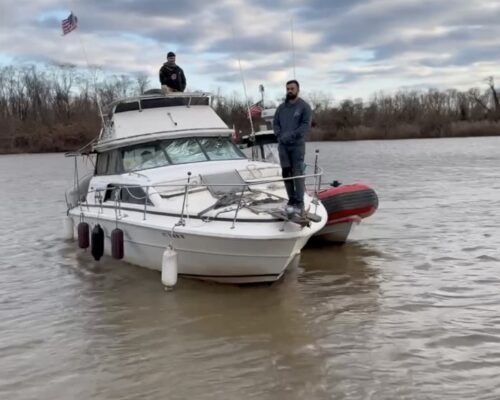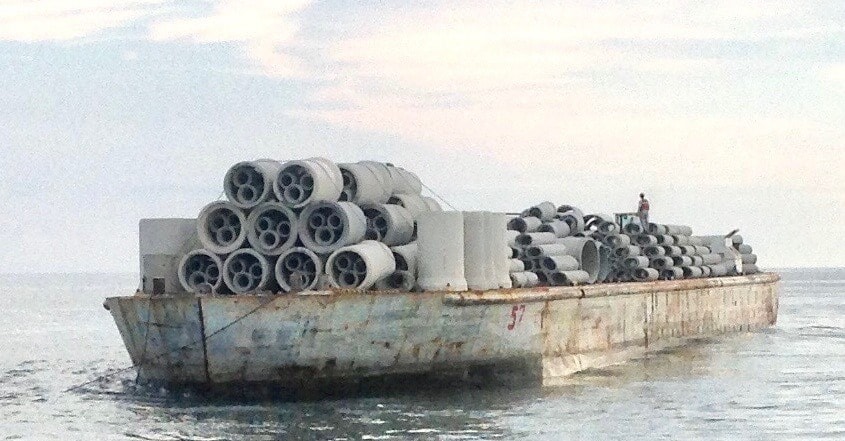Last week, a team of malacologists from Virginia’s Department of Wildlife Resources (DWR) and the US Fish & Wildlife Service (USFWS) planted about 1,300 tagged, federally endangered freshwater James spinymussels in the mainstem of the James River near Scottsville, about 30 miles west of Richmond.
The team had painstakingly cultured these spinymussels at the Virginia Fisheries and Aquatic Wildlife Center’s cooperative freshwater mussel hatchery at USFWS Harrison Lake National Fish Hatchery near the tidal James downstream in Charles City since 2007. In addition to colored, numbered tags on the shells, about half of them also carry passive integrated transponder (PIT) tags. Using both PIT receivers and wetsuits with snorkels, team members will keep track of them as they begin their long lives (20-100 years!), looking especially in time for untagged mussels that will indicate natural reproduction.
For centuries, hundreds of thousands of James spinymussels lived and thrived throughout the main river and its tributaries, all the way up to their sources on the Alleghany Plateau. The mussels were integral elements in the river ecosystem, filtering the water with their gills and providing food for fish, birds, and mammals like river otters. The Industrial Revolution and intensive agriculture in the James basin, however, brought multiple forms of pollution, including smothering silt, sewage, and various chemicals that severely damaged all the river’s freshwater mussels, especially this species.
Some James spinymussels have survived in disconnected, but healthier, sections of the James’s upper tributaries. Before this planting, they had been missing from the main river for at least 50 years. In that time, however, the Clean Water Act and the actions of many, many partners have greatly improved the river’s health, to the point that the DWR/USFWS team could release this group of pioneer returnees with reasonable confidence that they will survive and begin the long process of restoring the natural water filtration and habitat values their communities bring to the river ecosystem.
Freshwater mussels face complex challenges in free-flowing streams. Because they live sessile (stationary) lives, with movement capabilities measured in inches or feet, they must rely on other creatures to spread their offspring.
In the case of the James spinymussel, these “alternative hosts” are several species of small shiners and dace indigenous to the river. Male mussels release sperm into the water and females draw them in with their gills, then release fertilized eggs into the flow. The larvae attach to the gills, fins, or scales of the host fish, though not in destructive ways. They ride with the fish for several weeks until they develop into tiny juveniles, at which point they drop off and begin life wherever they are. Obviously, like seed scattered on a farm field, some do not survive, but this remarkable broadcast system served them well for eons until human activity disrupted it.
Conservationists hope that efforts to reverse the James River’s decline benefits the host fish species, the spinymussels, and the various other species of freshwater mussels native to the river. This planting is a precedent-setting re-investment in the natural systems that complement human efforts to restore the health of the James.
-John Page Williams




